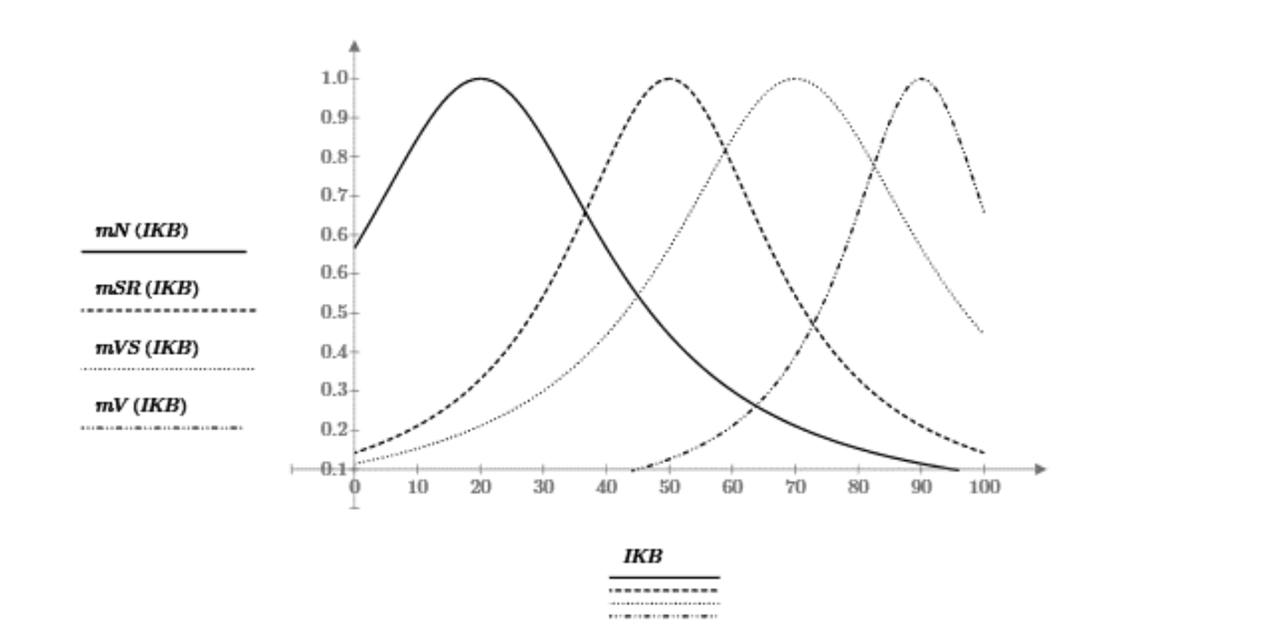

The table of content
This article is a summary of the scientific work published by Serhii Kozlovskyi, Petro Syniehub, Andrii Kozlovskyi, Ruslan Lavrov
The original source can be accessed via DOI: 10.33111/nfmte.2022.025
The Rise of Intellectual Capital in the Digital Age
The modern economy is no longer driven by factories and physical goods, but by intellectual capital—the skills, knowledge, creativity, and innovation that individuals and organizations bring to the table. This shift is evident in advanced economies, where new technologies are estimated to contribute up to 85% of GDP growth. By 2025, digital products and services are projected to account for half of the global GDP, highlighting a significant transition where nations prioritizing science, innovation, and high-tech production are gaining a competitive edge in global markets and the evolving landscape of work.
This transformation is fueled by a new wave of digitization, fundamentally reshaping how businesses operate, make decisions, and interact. Digital ecosystems, platforms, and smart products are now commonplace across all industries. Consequently, effectively managing intellectual capital is no longer an option; it is essential for long-term success.
The challenge lies in quantifying something as intangible as intellectual capital. While the concept originated in the 1960s, methods for its evaluation have evolved considerably. Traditional metrics like Tobin's Q and Economic Value Added (EVA) have been supplemented by comprehensive frameworks such as Skandia's Navigator and the Intangible Assets Monitor, which assess human skills, corporate structure, external relationships, and market influence.
The latest "third generation" metrics integrate quantitative data with qualitative insights, incorporating factors like employee engagement, training, and innovation cycles. Tools such as the IC Index and IC Rating help leaders track intellectual value and identify risks and performance trends.
Despite these advancements, many current models struggle to effectively combine quantitative and qualitative information. To address this, researchers are exploring fuzzy logic and neuro-fuzzy systems—mathematical methods that can process uncertainty and subjective input, mimicking human reasoning. This approach is particularly beneficial in project and innovation management, where decisions often blend intuition, experience, and incomplete data. Building on techniques like PERT, Critical Path, and Earned Value Analysis, the next step involves integrating these with intelligent systems to manage the complexities of today's business environments.
This study aims to develop a structural model for managing intellectual capital within business communities using neuro-fuzzy systems. The goal is to help decision-makers understand and evaluate their organization's knowledge assets, even with incomplete or subjective data. By making intangible value measurable, this model seeks to empower businesses to make smarter strategic decisions, enhance innovation, and establish a sustainable competitive advantage in a digital economy.
Collaboration Drives Success
The link between collaboration and business success is now measurable. Companies within business communities consistently outperform those operating independently, showing stronger client relationships, better sales growth, and more stable income. This advantage stems from improved access to resources, technologies, investments, and expert feedback.
These communities are more than just networking hubs; they include diverse businesses (large, medium, and small) and connect them with public institutions. Their purpose is to protect members' interests, foster innovation, encourage mentorship, and accelerate knowledge sharing.
This study specifically addresses how to assess the intellectual capital of such a community by evaluating a real-world Ukrainian business network called "Board." As of June 2022, "Board" had over 1,000 members, including 982 Ukrainian and 130 international companies. It operates on principles of peer-to-peer mentoring and collective intelligence, helping members make faster, smarter business decisions.
To evaluate "Board's" intellectual capital, researchers developed a custom model based on fuzzy logic, a mathematical method that handles ambiguity, subjective input, and incomplete data—ideal for real business settings where decisions often blend experience with data.
At the core of the model is a Neuro-Fuzzy Hybrid System (NFHS), which combines artificial intelligence with human judgment. This system uses both subjective evaluations (like a mentor's experience) and objective indicators (like Tobin's Q, a company's market-to-asset value ratio) to provide a comprehensive view of each participant's intellectual capital.
The NFHS model incorporates feedback from three main groups:
- Mentors: Evaluated on their knowledge, experience, and qualifications.
- Members: Assessed using qualitative insights and financial indicators from their companies.
- Management: Oversees the community's intellectual development and provides strategic direction.
Each evaluation feeds into the central neuro-fuzzy system, which then provides feedback and insights to guide community growth, collaboration, and decision-making. This creates an adaptive model of value creation that acknowledges the human element of innovation, enabling business communities to quantify and intelligently manage what was once intangible.
How the NFHS System Works: Thinking Like Experts
To evaluate the complex intellectual capital in a diverse business community, the research team used an advanced neuro-fuzzy logic model. This system is structured and adaptive, capable of interpreting human-like qualitative evaluations alongside traditional quantitative data.
Why Neuro-Fuzzy Logic? Fuzzy logic allows reasoning with uncertainty, which is valuable when data is incomplete, vague, or subjective—common when assessing expertise, mentorship, or innovation potential. Neuro-fuzzy systems combine fuzzy logic with neural networks, enhancing learning and adaptability. Fuzzy logic processes imprecise data, while the neural network refines the system based on experience.
The system evaluates intellectual capital across three main groups:
- Mentors (S): Experienced community members whose intellectual capital is subjectively assessed by peers based on their experience, knowledge, and education (0-100 points).
- Members (T): Regular business participants evaluated using both subjective feedback from the community and objective financial indicators like Tobin's q.
- Managers/Founders (K): The community's leadership, whose intellectual capital is measured through a confidential survey of mentors and members, covering expertise, leadership, and strategic vision. Scores are averaged for accuracy.
These three dimensions feed into a layered, hierarchical system. Each evaluation (S, T, K) is described using linguistic ratings such as Low, Medium, or High, which are then processed using bell-shaped membership functions to convert ambiguous human input into structured numerical estimates.
The model's architecture is an "inference tree." Inputs from mentor, member, and manager evaluations are combined into intermediate nodes (M for mentors, U for members, and K for managers). The final output, IKB, is the composite indicator for the community's overall intellectual capital.
Formally, the calculations are structured as follows:
- M = f(S,...S) - mentors' collective evaluation
- U = fu(T,...T) - members' collective evaluation
- K = (K1+K2+K3)/3 - average expert evaluation of the founders
- IKB = FIKB(M, U, K) - overall intellectual capital score
Each component is evaluated on a 100-point scale, classifying the community's intellectual strength.
The IKB score indicates a business community's strength, innovativeness, and untapped potential. Based on expert thresholds:
- 80-100 points (Class A): High Intellectual Capital—rich in knowledge, strategically mature, ready for innovation.
- 60-80 points (Class B): Above Average—strong knowledge base, solid performance, and collaboration.
- 40-60 points (Class C): Medium—stable foundation with opportunities for development and engagement.
- 0-40 points (Class D): Low—may lack mentorship depth, innovation infrastructure, or strategic vision.
This model is a diagnostic and strategic tool, allowing leaders to identify knowledge gaps, strengthen mentoring, prioritize investments, and quantify intangible value by analyzing intellectual capital components and tracking changes over time.
NFHS System Mechanics
After establishing the NFHS structure, the next step was building the membership functions. These mathematically interpret qualitative ratings ("Low," "Medium," "High") across a 100-point scale. For the IKB output (intellectual capital of "Board"), the model uses smooth, bell-shaped curves for each intellectual capital level. This means an 82 score strongly indicates "High IC" but also allows for some likelihood of being in the "Above Average" group, reflecting real-world evaluation uncertainty.

To train the system on how various evaluation combinations (S, T, K) affect the final score, researchers created hierarchical "If-Then" knowledge bases. These rules link specific input patterns (e.g., High mentor, Medium member, Low management) to probable outcomes. Each rule is weighted, and fuzzy logic combines them mathematically. For example:
- Rule 1051: If mentors = Low AND members = Low AND managers = Low, then community IC = Low.
- Rule 1062: If mentors = Medium AND members = High AND managers = High, then community IC = High.
These calculations, performed in Matlab using the "centrifugation method extended" defuzzification algorithm, convert fuzzy probabilities into a clear numerical value. The "Board" community's final IKB score was 82, placing it in the "High IC" (Class A) category.
Managing with NFHS
The evaluation of intellectual capital is only the first step; the next crucial phase involves translating this insight into action. The NFHS is not just an analysis tool; it's a comprehensive management decision system that helps business communities like "Board" track, optimize, and enhance their collective value.
In practice, the system operates as follows:
- The community selects mentors based on their high intellectual capital scores.
- Mentors share knowledge with members to increase their Tobin’s q values, indicating strategic potential and market position.
- Management uses NFHS to monitor intellectual capital performance, identify issues, and support underperforming members.
- Members actively participate; their intellectual capital levels are influenced by engagement with technology, knowledge sharing, and response to mentoring.
The primary indicator of improvement is an increase in a member’s Tobin’s q over time, signifying successful knowledge transfer and systemic learning—precisely what the model aims to track.
The power of this approach lies in its replicability and scalability. Although this study focused on the "Board" business community, the methodology can be adapted to various contexts such as corporate internal knowledge ecosystems, industry associations that promote innovation, public-private innovation clusters, and educational or startup ecosystems aiming to map talent and mentoring effectiveness. In complex and uncertain economic environments—where traditional forecasting tools often fall short—the NFHS stands out by transforming qualitative insights into actionable intelligence.
Conclusion and Future Outlook
In a rapidly changing and unpredictable economy, traditional forecasting methods are often insufficient. Cognitive approaches like the Neuro-Fuzzy Hybrid System (NFHS) offer an adaptable way to manage complexity by combining mathematical rigor with human judgment.
This study demonstrated how the NFHS framework can evaluate and manage intellectual capital in business communities, using "Board" as a real-world example. Unlike static methods, NFHS accounts for the dynamic interactions among leaders, mentors, and members, capturing the collaborative nature of modern knowledge ecosystems.
This approach is unique because it combines quantitative analysis with expert qualitative insights, making it especially effective for modeling in uncertain economic conditions. It also accurately reflects how business communities operate—through feedback loops, peer influence, and shared growth. Additionally, it offers a flexible structure that can be integrated into management systems, allowing for continuous monitoring and improvement of intellectual capital.
The system not only measures intellectual capital but also models its behavior, growth, and impact. The NFHS-implemented ruling subsystem guides intellectual asset development in a structured, data-informed way, while the ruled subsystem represents the rich human element of intellectual capital.
While this study focused on "Board," the methodology has broad applications. The same logic and structure can be applied to innovation clusters, corporate knowledge networks, startup ecosystems, educational/scientific communities, and public-private partnerships. This model brings clarity wherever there are complex connections between people, knowledge, and performance.
Future research could explore several promising directions. One area is expanding the NFHS model to include real-time data and AI-generated feedback loops, allowing for more dynamic and responsive insights. Another direction is applying the system to different types of organizations and industries beyond business communities. Integrating the model with platforms that track human resources, innovation, or productivity metrics could also enhance its usefulness. Additionally, testing its long-term predictive accuracy in various economic scenarios would help validate its reliability. Ultimately, this system is more than just a tool for evaluation—it offers a practical framework for nurturing, growing, and managing intelligence, collaboration, and human potential in today’s economy.
References
- LETA Capital, & Devar. (2021). State Of Phygital. https://global-uploads.webflow.com/6198cb076e036ab5a326fa84/623843d93006dc23e1b05264_STATE%20OF%20PHYGITAL%202021%20BY%20LETA%20AND%20DEVAR.pdf
- Bontis, N. (2001). Assessing knowledge assets: a review of the models used to measure Intellectual Capital. International Journal of Management Review, 3(1), 41–60. https://doi.org/10.1111/1468-2370.00053
- Galbraith, J. K. (1967). The New Industrial State. Houghton Mifflin.
- Sakaiya, Т. (1991). The Knowledge-Value Revolution, or a History of the Future. Kodansha International.
- Petty, R., & Guthrie, J. (2000). Intellectual capital literature review: Measurement, reporting and management. Journal of Intellectual Capital, 1(2), 155–176. https://doi.org/10.1108/14691930010348731
- Edvinsson, L., & Malone, М. (1997). Intellectual Capital: Realizing Your Company’s True Value by Finding Its Hidden Brainpower. Harper Business.
- Kozlovskyi, S., Baidala, V., Tkachuk, O., & Kozyrska, T. (2018). Managament of Sustainable Development of the Agrarian Sector of the Regions of Ukraine. Montenegrin Journal of Economics, 14(4), 175–190. https://doi.org/10.14254/1800-5845/2018.14-4.12
- Kasiewicz, S., Rogowski, W., & Kicińska, M. (2006). Kapitał intelektualny. Spojrzenie z perspektywy interesariuszy [Intellectual capital. View from the perspective of stakeholders]. Oficyna Ekonomiczna. [in Polish]
- Tobin, J. (1969). A general equilibrium approach to monetary theory. Journal of Money Credit and Banking, 1(1), 15–29. https://doi.org/10.2307/1991374
- Kaldor, N. C. (1966). Marginal Productivity and the Macro-Economic Theories of Distribution: Comment on Samuelson and Modigliani. The Review of Economic Studies, 33(4), 309–319. https://doi.org/10.2307/2974428
- Chen, S., & Dodd, J. L. (1997). Economic Value Added (EVATM): An Empirical Examination of a New Corporate Performance Measure. Journal of Managerial Issues, 9(3), 318–333. http://www.jstor.org/stable/40604150
- Finegan, P. T. (1989). Financial incentives resolve the shareholder-value puzzle. Corporate Cashflow, October, 27–32.
- Tully, S., & Hadjian, A. (1993). The real key to creating wealth. Fortune, 128(6), 38–50.
- Edvinsson, L., & Malone, M.S. (2001). Kapital intelektualny [Intellectual capital]. Wydawnictwo Naukowe PWN. [in Polish]
- Sveiby, K.-E., Annell, E., Axelsson, S., Emilsson, P.-M., Karlsson, H., Wangerud, C.J., & Vikström, S. (1990). The Invisible Balance Sheet. Affarsvarlden-Ledarskap.
- Buenechea‐Elberdin, M., Kianto, A., & Sáenz, J. (2017). Intellectual capital drivers of product and managerial innovation in high‐tech and low‐tech firms. R&D Management, 48(3), 290–307. https://doi.org/10.1111/radm.12271
- Carnegie, G. D., & Napier, C. J. (2017). The accounting, auditing & accountability journal community in its 30th year. Accounting, Auditing & Accountability Journal, 30(8), 1642–1676. https://doi.org/10.1108/AAAJ-12-2016-2804
- Malcolm, D. G., Roseboom, J. H., Clark, C. E., & Fazar, W. (1959). Application of a Technique for Research and Development Program Evaluation. Operations Research, 7(5), 646–669. https://doi.org/10.1287/opre.7.5.646
- Magee, J. F. (1964). Decision trees for decision making. Harvard Business Review, 42(4), 126-138. https://hbr.org/1964/07/decision-trees-for-decision-making
- Kelley, J. E., Walker, M. R., & Sayer, J. S. (1989). The origins of CPM: a personal history. PM Network, 3(2), 7–22. https://www.pmi.org/learning/library/origins-cpm-personal-history-3762
- Goldratt, E. M. (1997). Critical Chain. North River Press.
- Fleming, Q. W., & Koppelman, J. M. (2010). Earned Value Project Management (4th ed.). Project Management Institute.
- Kozlovskyi, S., Mazur, H., Vdovenko, N., Shepel, T., & Kozlovskyi, V. (2018). Modeling and forecasting the level of state stimulation of agricultural production in Ukraine based on the theory of fuzzy logic. Montenegrin Journal of Economics, 14(3), 37–53. https://doi.org/10.14254/1800-5845/2018.14-3.3
- Matviychuk, A., Lukianenko, O., & Miroshnychenko, I. (2019). Neuro-fuzzy model of country’s investment potential assessment. Fuzzy economic review, 24(2), 65–88. https://doi.org/10.25102/fer.2019.02.04
- Turner, R. (2014). Handbook of Project-Based Management: Leading Strategic Change in Organizations (4th ed.). McGraw-Hill.
- Antoniuk, L., Gernego, Iu., Dyba, V., Polishchuk, Ye., & Sybirianska, Yu. (2017). Barriers and opportunities for hi-tech innovative small and medium enterprises development in the 4th industrial revolution era. Problems and Perspectives in Management, 15(4), 100-113. https://doi.org/10.21511/ppm.15(4).2017.09
- Zavidna, L., Trut, O., Slobodianiuk, O., Voronenko, I., & Vartsaba, V. (2022). Application of anti-crisis measures for the sustainable development of the regional economy in the context of doing local business in a post-COVID environment. International Journal of Sustainable Development and Planning, 17(5), 1685-1693. https://doi.org/10.18280/ijsdp.170535
- Balan, V. (2020). Zastosuvannia dynamichnoho nechitkoho space-analizu dlia formuvannia stratehii pidpryiemstva [Application of dynamic fuzzy space-analysis for forming enterprise strategies]. Neiro-Nechitki Tekhnolohii Modelyuvannya v Ekonomitsi (Neuro-Fuzzy Modeling Techniques in Economics), 9, 26-64. http://doi.org/10.33111/nfmte.2020.026 [in Ukrainian]
- Kozlovskyi, S., Butyrskyi, A., Poliakov, B., Bobkova, A., Lavrov, R., & Ivanyuta, N. (2019). Management and comprehensive assessment of the probability of bankruptcy of Ukrainian enterprises based on the methods of fuzzy sets theory. Problems and Perspectives in Management, 17(3), 370–381. http://dx.doi.org/10.21511/ppm.17(3).2019.30
- U.S. Chamber of Commerce. (2021). Small Business Index, Q4 2021. Index Reaches Pandemic-Era High, as Many See Brighter Future. https://www.uschamber.com/sbindex/2021-Q4
- Syniehub, P. (2022). Kontseptsii stvorennya ta pryznachennya bіznes-spіl’not v ekonomіchnomu prostorі [Concepts of creation and purpose business communities in the economic space]. Ekonomіka ta suspіl’stvo (Economy and Society), 35, Article 32. https://doi.org/10.32782/2524-0072/2022-35-32 [in Ukrainian]
- Board. (2022). Spil’nota Board [Community Board]. Retrieved July 7, 2022, from https://board.business/
- Kozlovskyi, S., Nikolenko, L., Peresada, O., Pokhyliuk, O., Yatchuk, O., Bolgarova, N., & Kulhanik, O. (2020). Estimation level of public welfare on the basis of methods of intellectual analysis. Global Journal of Environmental Science and Management, 6(3), 355–372. https://doi.org/10.22034/gjesm.2020.03.06
- Azarova, A., Radomska, L., & Azarova, L. (2020). Neuro-fuzzy modelling of economic specialties students’ speech-communicative professional competence. Neiro-Nechitki Tekhnolohii Modelyuvannya v Ekonomitsi (Neuro-Fuzzy Modeling Techniques in Economics), 9, 3-25. http://doi.org/10.33111/nfmte.2020.003
- Rotshtein, A. P., Shtovba, S. D. (2002). Influence of Defuzzification Methods on the Rate of Tuning a Fuzzy Model. Cybernetics and Systems Analysis, 38, 783–789.
- Matviychuk, A. (2010). Bankruptcy prediction in transformational economy: discriminant and fuzzy logic approaches. Fuzzy economic review, 15(1), 21–38. https://doi.org/10.25102/fer.2010.01.02
- Zadeh, L. A. (1994). Soft Computing and Fuzzy Logic. IEEE Software, 11(6), 48–56. https://doi.org/10.1109/52.329401
- Zadeh, L. A. (1997). Toward a theory of fuzzy information granulation and its centrality in human reasoning and fuzzy logic. Fuzzy Sets and Systems, 90(2), 111–127. https://doi.org/10.1016/S0165-0114(97)00077-8
- Rotshtein, A. (1998). A. Design and Tuning of Fuzzy Rule-Based Systems for Medical Diagnosis. In Н.-N. Teodorescu, A. Kandel, & L. C. Jain (Eds.), Fuzzy and Neuro-Fuzzy Systems in Medicine (pp. 243–289). CRC Press. https://www.researchgate.net/publication/245881295_Design_and_Tuning_of_Fuzzy_Rule-Based_Systems_for_Medical_Diagnosis
- Rotshtein, A. P., & Shtovba, S. D. (2009). Modeling of the Human Operator Reliability with the Aid of the Sugeno Fuzzy Knowledge Base. Automation and Remote Control, 70, 163–169. https://doi.org/10.1134/S0005117909010123
- Pratap, R. (2016). Getting started with MATLAB 5: A quick introduction for scientists and engineers (7th ed.). Oxford University Press.
- Matviychuk, A. (2012). Obgruntuvannia vyboru naukovoi spriamovanosti zhurnalu (vstupne slovo holovnoho redaktora) [Rationale for Choosing the Scientific Focus of the Journal (Introduction by the Chief Editor)]. Neiro-Nechitki Tekhnolohii Modelyuvannya v Ekonomitsi (Neuro-Fuzzy Modeling Techniques in Economics), 1, 7–36. http://doi.org/10.33111/nfmte.2012.007 [in Ukrainian]
- Kozlovskyi, S. V., & Syniehub, P. S. (2022). Kognetyvna otsinka intelektual’nogo kapitalu ekonomichnykh system v ekonomitsi znan’ [Cognitive assessment of intellectual capital of economic systems in the knowledge economy]. Ekonomika ta derzhava, 8, 48–55. https://doi.org/10.32702/2306-6806.2022.8.48 [in Ukrainian]





































.png)
.png)
